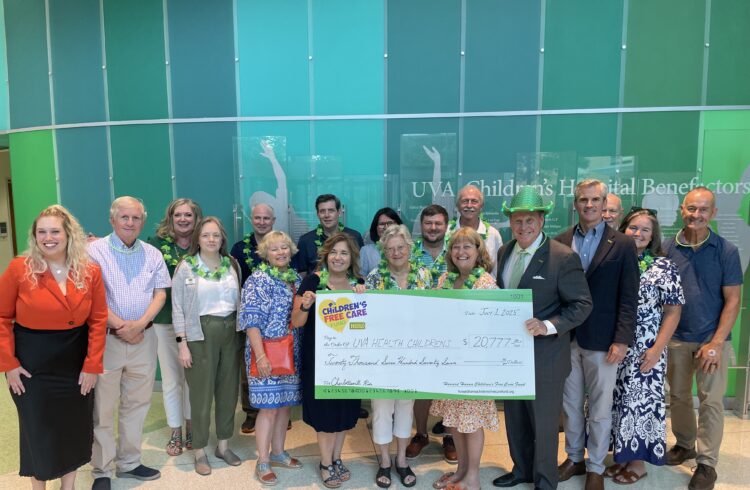
Coronary artery disease is the world's No. 1 killer. It can trigger heart attacks and strokes.
School of Medicine researchers have obtained important new insights into the development of coronary artery disease – the world’s No. 1 killer – in diverse groups of people traditionally underrepresented in research studies.
The UVA researchers, led by Clint L. Miller, PhD, and Chani J. Hodonsky, PhD, used a sophisticated new approach to understand how genetic – or inheritable – factors influence the development of coronary artery disease (CAD) in people of non-European descent. The focus of prior research primarily on people of European and East Asian descent has hampered discoveries in heart disease by limiting generalization to other ancestral populations and also by failing to capture the full spectrum of variation in humankind. As such, this new work implements important new tools to fill in the blanks in science’s understanding of different groups’ genetic risk factors.
The UVA researchers say their new approach will help scientists better understand all stages of the development of CAD – even before doctors can detect it in patients. That could set the stage for new and better ways to treat and possibly even prevent CAD.
“This work generates much-needed molecular data from primary vascular tissues derived from ancestrally diverse study participants,” said Miller, of UVA’s Center for Public Health Genomics. “By extending these resources to the community, we can better understand drivers of the disease process and begin to explore more targeted therapies for CAD.”
Understanding Coronary Artery Disease
Coronary artery disease is the most common form of heart disease, killing millions of people worldwide every year. It’s caused by the buildup of fatty plaques inside the coronary arteries that supply the heart with blood,eventually choking off blood flow and setting the stage for strokes and heart attacks. Some of this buildup is the result of diet and lifestyle choices, but our genes – the genetic instructions we inherit from our parents – also play a major role in determining our risk.
Prior research has identified hundreds of locations on our chromosomes where gene variants are located that influence our CAD risk. But narrowing that down to specific “causal” genes – the ones scientists believe could help develop treatments – has been difficult. Further, Miller and his team wanted to identify gene variants that specifically affected the coronary arteries in the heart. This is particularly challenging because vascular cells don’t always behave the same in lab dishes as they do in human patients.
Miller’s new approach helps overcome that obstacle and provides researchers a powerful new workflow for medical research in diverse groups. Using the approach, Miller and his team have already identified “transcriptional regulatory networks” that likely shape the strength and maintenance of the coronary arteries throughout our lifetimes. The scientists believe that disruptions of these networks may play a key role in plaque accumulation in the arteries and in our chances of developing CAD.
Further, the scientists were able to identify specific genes that may be critical to the development of plaque buildup, commonly called “atherosclerosis” or “hardening of the arteries,” in the coronary arteries. Drugs may eventually be developed that allow doctors to target these genes either to treat or prevent the plaque buildup. “One of the greatest benefits of population-based genetics research is that the findings are often relevant for a patient population even broader than that represented in the study,” said Hodonsky, of UVA’s Center for Public Health Genomics, now at Ionis Pharmaceuticals. “We were able to show that including individuals across the spectrum of genetic ancestry improved our ability to detect these associations and therefore increased the evidence available for choosing which genes to focus on for experimental validation in the lab.”
In a new scientific paper, the researchers note that their inclusive approach will help overcome the obstacles that have limited our understanding of coronary artery disease in people around the world.
“While these datasets were generated at the bulk level, future studies will need to profile individual cells and isoforms to provide greater resolution of cell states involved in CAD risk,” Miller said. “We are still at the tip of the iceberg in unravelling complex disease mechanisms, but we are excited to make continued progress in narrowing the search space for follow-up pre-clinical studies.”
Findings Published
The researchers have published their findings in the scientific journal Cell Genomics. The research team consisted of Hodonsky, Adam W. Turner, Mohammad Daud Khan, Nelson B. Barrientos, Ruben Methorst, Lijiang Ma, Nicolas G. Lopez, Jose Verdezoto Mosquera, Gaëlle Auguste, Emily Farber, Wei Feng Ma, Doris Wong, Suna Onengut-Gumuscu, Maryam Kavousi, Patricia A. Peyser, Sander W. van der Laan, Nicholas J. Leeper, Jason C. Kovacic, Johan L.M. Björkegren and Miller. Miller disclosed that he has received funding from biopharmaceutical company AstraZeneca for unrelated work; a full list of the authors’ disclosures is included in the paper.
The research was supported by the National Institutes of Health, grants R01HL148239, R01HL164577, T32HL007284, R01HL125863, R01HL130423, R01HL135093 and R01HL148167; the American Heart Association, grants 20POST35120545, AHA909150 and A14SFRN20840000; the Swedish Research Council and Heart Lung Foundation, grants 2018-02529 and 20170265; the Fondation Leducq, “PlaqOmics” grant 18CVD02; and the Single-Cell Data Insights award from the Chan Zuckerberg Initiative and Silicon Valley Community Foundation. The research was also supported by fellowship grants from the Bench to Bassinet Pediatric Cardiac Genomics Consortium and Cardiovascular Development Data Resource Center, as well as the UVA MSTP training grant, NIH T32GM007267.
UVA’s Department of Biomedical Engineering is a joint program of the School of Medicine and School of Engineering.
To keep up with the latest medical research news from UVA, subscribe to the Making of Medicine blog.
MORE FROM MILLER'S LAB: New "atherosclerosis atlas" advances understanding of heart attacks, strokes.



